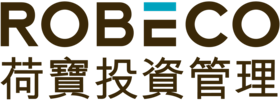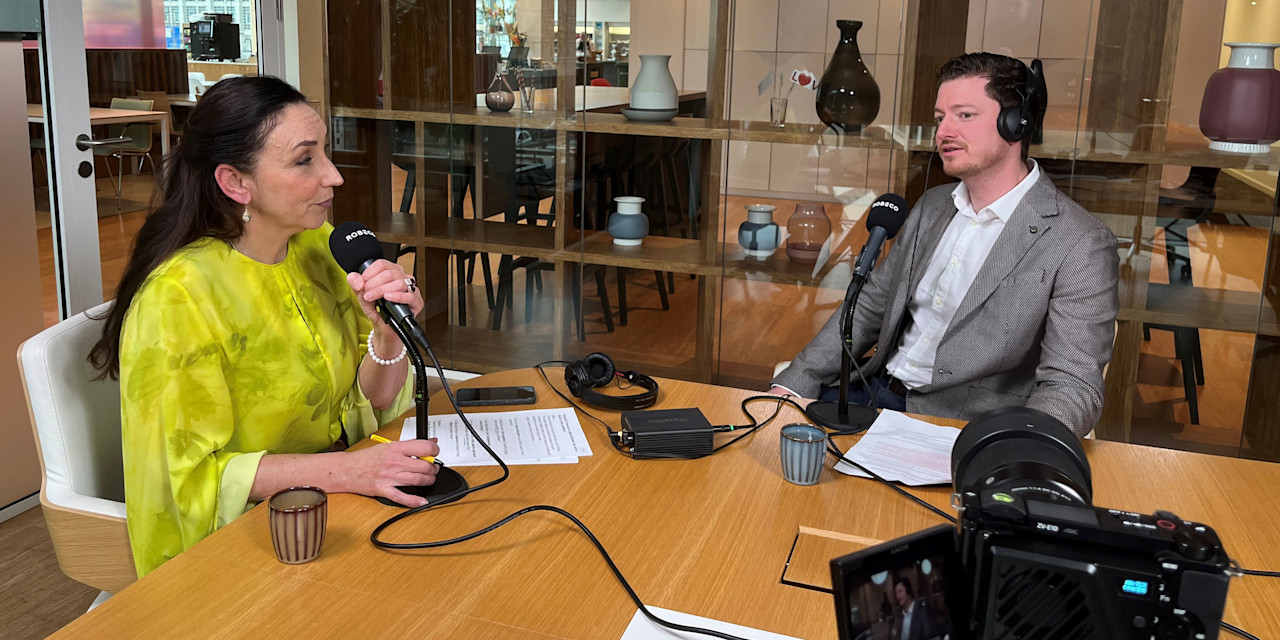


Next-gen quant evolution: using new signals in existing strategies
How has quant investing changed in response to new technological developments, and how have Robeco’s strategies developed in response? We invited Wilma de Groot, Head of Core Quant Equities and Head of the Quant Equity Portfolio Management team at Robeco, to share the company's evolution and perspective on recent advancements in the field.
As technological advancements open new horizons in the field, could you shed some light on how and when we began to integrate alternative signals into our strategies? How extensively has next-gen quant already been implemented across our strategies?
“Our principal models encompass well-known factors like value, momentum, and quality, which we categorize as return factors, as well as low risk for the conservative strategy. Having consistently conducted research on how we can enhance these factors, we started incorporating alternative signals in 2009, through the application of our timing indicator in our enhanced index strategies. This indicator, generally based on faster moving and innovative signals, helps us determine the optimal times to buy and sell stocks after our main model has identified attractive stocks.”
“Initially, we assigned a 10% weight to this timing signal and gradually enhanced our strategy with additional components. These elements provide significant potential and diversification benefits. For instance, our timing indicator, which has a low correlation with traditional factors, can reduce drawdowns and improve risk-return ratios. However, because they move fast these signals can lead to high turnover and trading costs if we give them too much weight.”
“To maximize net return, we've worked to refine the timing indicator and minimize trading costs. This allowed us to increase the indicator's weight to 20% in 2017 and currently, the weight is 25%. By the end of last year, we launched Quantum, our standalone next-gen strategy based on research and a model which has its foundation in 2009.”
“In terms of very new signals, one recent development is the use of machine learning. Initially, this was to predict risk, specifically distress risk, which means identifying which stocks are likely to fall. Now, machine learning is incredibly efficient at this, especially when you feed it a diverse set of risk-related variables.”
“You can also apply machine learning to exploit interaction effects, which is really exciting. Take for example, the short-term reversal effect, where stocks that have declined in the past few weeks tend to bounce back. Machine learning helps us fine-tune these strategies by considering additional dimensions such as liquidity of these stocks.”
“Around 2019, we started using a natural language processing (NLP) signal, to translate news sentiment into scores. It can evaluate the sentiment of the news – positive or negative. We are now expanding the use of NLP to analyze earnings call transcripts and even audio files of earnings calls, to not just analyze the words but also tone and intonation.”
How do you enhance the signals in your strategies to mitigate risks?
“One example involves analyst revisions where analysts revise earnings upward or downward. However, analysts have biases: they tend to prefer large cap, growth stocks. We aim to neutralize this bias, which has helped us lower risk and get better return characteristics in the past.”
“We explore this kind of thing in our academic research. A good example of this is our residual momentum paper, and our value and distress risk paper. The latter is where we take the value premium and demonstrate how to capture it and remove distress risk from the strategy. We use distress risk signals in our active low-risk strategy, Conservative Equities, to help us choose which companies to buy that have a low-risk profile. And we also use it in our return strategies to try to avoid stocks with the highest bankruptcy risk.”
How do you make sure that any new signals that are developed from these data sets are robust?
“While we do have a plethora of data sets at our disposal that are incredibly diverse, not all data sets make the cut. We’re discerning when we select data sets, making sure they are credible and can add value to our strategies, while also exploring new territories of data sets, which could range from patent data to financial blog data.”
“It’s true that the history of many new signals is not that long, but it’s often sufficient for what we need. For example, when we first started examining emerging markets, in 2006, the data wasn’t as comprehensive or high quality as what we had for developed markets. But it was good enough to start research, and as we dove in, we learned more, and were able to improve the data quality over time.”
“To make sure the new signals really are robust, we usually get our inspiration from academic literature, primarily focusing on the US. We then scrutinize these signals in other regions. For instance, even if emerging markets have less data, Europe might provide us with a strong out-of-sample test. We also evaluate how these signals perform under different market conditions. For a given period, even if it's short, we analyze how the signal behaved during various market phases – like a bull market, a bear market, or times of high volatility. Understanding how these signals react in various scenarios is vital.”
“Another exciting aspect is the ‘spanning alpha test’. Here, we investigate if the new data sets offer something beyond what we already have. We don’t want to reinvent the wheel. Sometimes a new variable might just be replicating existing information in a fancier package. In that case, then we’ll probably decide not to go on with it. But sometimes we do discover that a new variable is unique and valuable. That’s a tough test to pass, given that our existing models are pretty solid.”
What are some of the new signals next-gen quant uses that are linked to sustainability?
“Two signals we’ve started using recently are employee engagement and resource efficiency as sustainability elements. Employee engagement is a really interesting factor. So, employees can rate their companies on platforms like Glassdoor, where they express their satisfaction or dissatisfaction. Companies with higher ratings usually have a motivated and efficient workforce. We found that happy employees correlate with higher sales compared to labor costs, and interestingly, these companies tend to have better future stock returns. This is an alpha signal tied to the ‘social’ part of ESG: through employee satisfaction.”
“Resource efficiency, on the other hand, is more of an ‘E’ factor in ESG. Imagine airlines with very fuel-efficient planes. Obviously they’re going to have lower costs and use fewer resources, which should give them a competitive edge. We thought this would probably apply to other resource-heavy sectors, such as energy, utilities, automobiles, and industrials. One way to measure this is by looking at the amount of carbon emissions (as a proxy for resources used) in comparison to the sales of a firm. When we analyzed it we found that resource-efficient companies (with low emissions compared to sales) actually do tend to have higher future stock returns, and they also have lower carbon emissions, making it an sustainability win.”
探索量化價值
訂閱我們的電子報,獲取尖端的量化策略和見解。
How challenging is it to convince clients to join this quant evolution journey?
“We actively involve our clients in our process and methodologies, so they also contribute to our core models, and we share our research and advancements extensively with them. And we’re transparent about our process and the elements we consider – so they are part of the journey.”
With all these developments taking place, does it make it harder to stay ahead of the pack?
“We think our longevity here can give us an advantage, because we’ve got this experience in conducting rigorous research and we aim to strike an optimal balance between established factors and innovative data sets, blending traditional data with emerging signals.”
“Turnover and trading costs, which are often either overlooked or seen as set in stone in academic literature, are something we consider carefully. With slow moving strategies, the impact is low, but especially with these newer and faster moving signals, that’s naïve at best and a waste at worst.”
“You need to think about a smart rebalancing strategy; a smart trading strategy. With Weili Zhou, our Head of Quant Equity, we've written papers on implementing strategies that account for trading costs in a smart way and can be executed net of trading costs.”
And finally, how do we hope to maintain our position as innovators going forward?
“We don't and won’t adopt new alternative datasets without thorough investigation. And we don't incorporate signals merely to look innovative; we do it because we believe they add value. We aim to generate diversified alpha – concentrating on multiple signals in addition to the well-known ones. If a particular approach aids diversification, enhances alpha, or improves the risk profile, we're keen to adopt it. But, we’ll always seek the right balance and consider trading costs seriously, as they are a critical aspect of our strategy.”
Short term reversal component: This involves looking at stocks that have shown a short-term reversal in their performance.
Liquidity characteristics: We also look at stocks whose liquidity profile has improved, which we view as a positive sign.
Information from the lending market: We use information from the short lending market, considering a high level of shorting on a stock as a negative sign.
Web script data (job vacancies): We monitor the number of job vacancies at firms, viewing an increase as an expectation for future growth.
Sustainability information: Since 2010, we’ve included sustainability information as part of our Quality theme.
Information from the credit market: We use the performance of a company's bonds to predict future stock returns, and vice versa.
News sentiment: We analyze the type of news coming out about a company, viewing more positive news as a good sign for future stock returns.
Machine learning techniques to predict distress risk: We use machine learning techniques to predict the risk of a company going bankrupt.
While the specifics of each signal and how it's used will vary, the overall goal is to improve the risk-return profile of the portfolio.
Important information
The contents of this document have not been reviewed by the Securities and Futures Commission ("SFC") in Hong Kong. If you are in any doubt about any of the contents of this document, you should obtain independent professional advice. This document has been distributed by Robeco Hong Kong Limited (‘Robeco’). Robeco is regulated by the SFC in Hong Kong. This document has been prepared on a confidential basis solely for the recipient and is for information purposes only. Any reproduction or distribution of this documentation, in whole or in part, or the disclosure of its contents, without the prior written consent of Robeco, is prohibited. By accepting this documentation, the recipient agrees to the foregoing This document is intended to provide the reader with information on Robeco’s specific capabilities, but does not constitute a recommendation to buy or sell certain securities or investment products. Investment decisions should only be based on the relevant prospectus and on thorough financial, fiscal and legal advice. Please refer to the relevant offering documents for details including the risk factors before making any investment decisions. The contents of this document are based upon sources of information believed to be reliable. This document is not intended for distribution to or use by any person or entity in any jurisdiction or country where such distribution or use would be contrary to local law or regulation. Investment Involves risks. Historical returns are provided for illustrative purposes only and do not necessarily reflect Robeco’s expectations for the future. The value of your investments may fluctuate. Past performance is no indication of current or future performance.






















